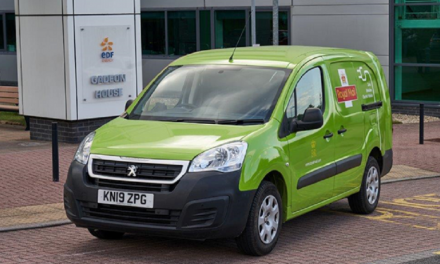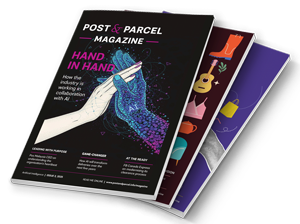
Parcelforce to try experiment again
Parcelforce Worldwide, the lossmaking express package arm of the British Royal Mail Group, is to relaunch an experimental evening home delivery service in the New Year, writes Roger Hailey.
Managing director Vanessa Leeson confirmed that Parcelforce was talking to customers about restarting 1800 hrs until 2100 hrs home deliveries following the suspension of a previous trial earlier this year.
High-flyer Ms Leeson, recently promoted to the Royal Mail board under tough new chairman Allan Leighton, said: “We are looking at the delivery mechanism to see what the customers want and to assess the volumes.”
Parcelforce, which lost several hundred million pounds over the past decade, was at last on track to break even by the end of the financial year 2004-05, said Ms Leeson.
The parcel division recorded a half year loss of £89m ($140m), a slight improvement on £96m of red ink in the previous half year and £20m better than forecast. Full year turnover is on line for £275m-£300m.
It has been a busy six months at Parcelforce. So far 3,000 jobs have gone, all five regional distribution depots have closed and 35 nationwide offices have shut up shop.
Another 15 local offices will close in the New Year, leaving 50 still open across the United Kingdom.
Parcelforce has also shed lossmaking business totalling 80m parcels a year, two thirds of the previous total system throughput of 120m.
“We finished getting rid of the lossmaking business six weeks ago,” said Ms Leeson, who confirmed that 350 unprofitable contracts had gone elsewhere in the market.
Around 1,700 Parcelforce jobs were made redundant, with a further 1,300 a mix of “natural wastage, short term contracts and deployment elsewhere within the Post Office”.
Another 2,000 jobs are set to go in what has been a strike-free settlement with normally fractious postal trade unions.
One interesting transition will be the increased proportion of Parcelforce owner-drivers, soon to account for 25% of the driver workforce. There are longer-term plans for owner-drivers to be more than 50% of the workforce.
By the end of this financial year Parcelforce will have 450 self-employed staff out of 2,000 drivers. That compares with just 10 independents out of 4,500 full time salaried drivers just six months ago.
For Parcelforce there are numerous tangible cost benefits. The driver buys his own van, pays for the fuel, receives no sick pay and has to fund his own pension contributions.
Equally important is the change in attitude. Drivers become more involved in the decision-making process at local depot level because they are paid on a per-parcel basis.
But owner-drivers will not receive a potential £800 “dividend” due to be paid to full-time staff if Royal Mail Group makes a £400m profit in the 2004-05 financial year.
Ms Leeson expects Parcelforce to make a debut full year profit in 2005-06 at industry norm margins of between 5% and 8%.
Certainly tough decisions have been taken. Of the previous 120m parcel throughput, 25m worth of mail order returns have gone back to the Royal Mail along with 7m of universal obligation parcels.
A further 48m have been split evenly between the Royal Mail and the private sector, leaving Parcelforce with 40m of premium, if not yet profitable, packages annually.
Parcelforce may have shed 350 customers but it still retains a loyal customer base of 30,000 contracted, frequent or ad hoc clients, primarily business-to-business.
There are no plans to merge with GLS, the Royal Mail’s profitable pan-European parcels division under chief executive Rico Back.
Parcelforce is the British agent for GLS and remains a net importer of parcels to the tune of 2m packages a year.
Mr Back reports directly to Mr Leighton, but Ms Leeson is a group board member.
It will be interesting to see which brand prevails ultimately, Parcelforce or GLS.
– Royal Mail Group has appointed four non-executive directors from the private sector to its board.
They are David Fish, a former member of the Mars operating board, Richard Handover of W H Smith, Mike Hodgkinson of BAA and John Neill of Unipart.












